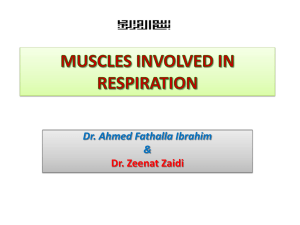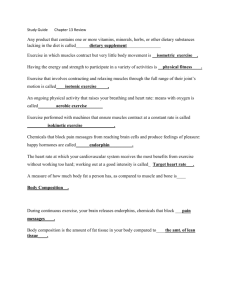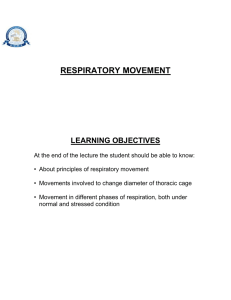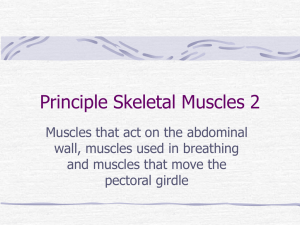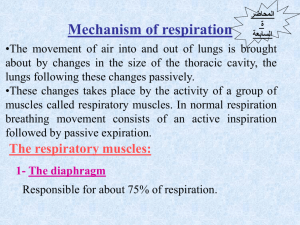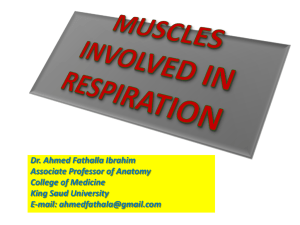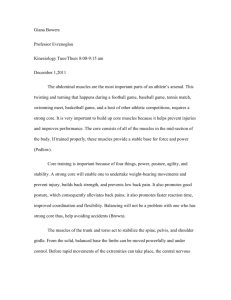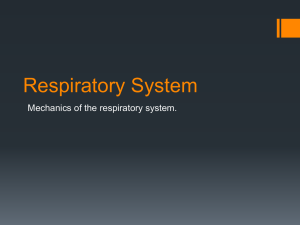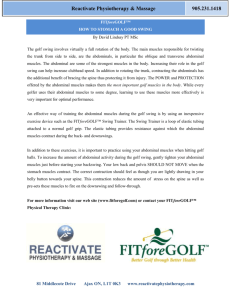Muscles of Ventilation
advertisement
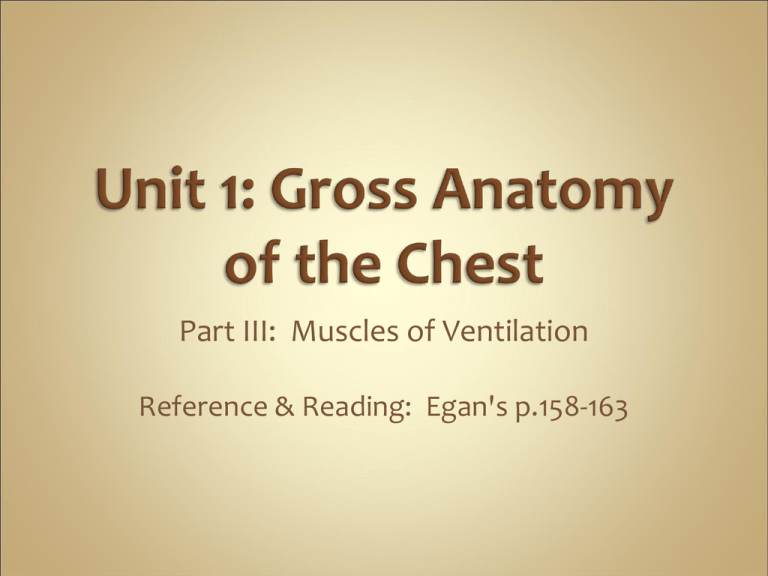
Part III: Muscles of Ventilation Reference & Reading: Egan's p.158-163 Primary Muscles Diaphragm Intercostal muscles Accessory Muscles Scalenes Sternocleomastoid Pectoralis Major Abdominals Rises from costal margin Connects at central tendon Hemidiaphragms Separates thorax from abdomen Resting Position When muscle contracts, drops floor of thoracic cavity down Pulls air in Located between each rib pair External Intercostals Internal Intercostals Active during quiet breathing Elevates ribs, ↑ thoracic volume - occurs closer to exhalation At increased lung volumes, ribs are lowered Stabilizes chest wall during large pressure changes Quiet Breathing – from www.gettyimages.com Also called intercostal retractions There is increased amount of negative pressure generated Clinical sign of increased WOB; look at suprasternal notch Retractions on infant Collection of chest wall muscles Help to increase thoracic space, by assisting the primary muscles: Includes: Scalene Sternocleomastoid Pectoralis Trapezius 3 muscles Anterior Medial Posterior Arise from lower 5 cervical vertebrae & connect to 2nd rib anteriorly Function: Normal With increased WOB Rise from manubrium & medial end of clavicle Insert into the skull Function: Primary: supports head Increased WOB: raises sternum up & out Rises from clavicle & anterior surface of sternum Function: Primary: hugging motion With increased WOB: pulls opposite of primary function Arise from the occipital bone in the skull & all thoracic vertebrae; insert into clavicle Function: Primary: shrug shoulders; raise or lower arms Increased WOB: Raises rib cage Used to forcibly exhale (cough, sneeze, etc) Muscles used are the abdominal muscles Collectively compress abdominal contents to push diaphragm up Includes: External & internal obliques Transverse abdominals Rectus abdominus External Oblique: arise from lower 8 ribs Internal Oblique: Arise from iliac crest& inguinal ligament Fibrous aponeurosis Arises from: costal cartilages Iliac crest Part of inguinal ligament Connects to a aponeurosis Arises from pubic bones Inserts into costal cartilages 5 -7 Contraction ↓ distance from xiphoid to pubis


